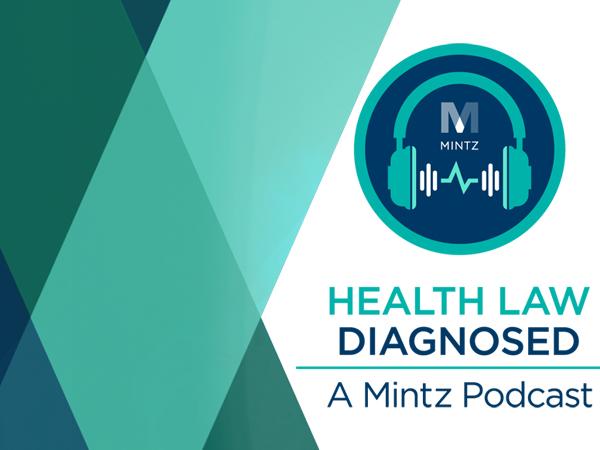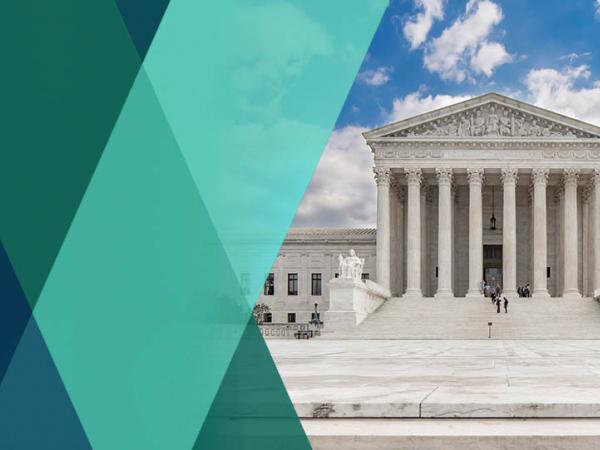
Health Care
Viewpoints
Filter by:
CMS Proposes Changes to Medicare Advantage Program for CY 2020
February 6, 2019 | Blog | By Xavier Hardy, Bridgette Keller
CMS recently proposed several important changes for the Medicare Advantage (MA) program that relate to payment, benefit design, and new actions to combat the opioid crisis. Here, we take a look at the proposed changes to risk adjustment payments, supplemental benefits, and a value-based insurance design model; all working toward CMS’s goal of maximizing coverage and competition. In a prior post we discussed CMS’s Part D Payment Modernization Model and stay tuned for our upcoming discussion of CMS’s next steps to combat opioid misuse.
Read more
Update on Azar v. Allina Health Services: Supreme Court Hears Oral Argument on When CMS Must Use Formal Rulemaking
February 4, 2019 | Blog | By Laurence Freedman, Daryl Berke
On January 15, 2019, the Supreme Court heard oral arguments in Azar v. Allina Health Services, a prominent case involving a challenge by hospitals over when Medicare’s instructions to its contractors impact a “substantive legal standard” and thus must be issued through formal rulemaking. As discussed in our prior post, the Court is reviewing the U.S. Court of Appeals for the D.C. Circuit’s decision that threw out a Medicare rate calculation methodology for Disproportionate Share Payments (DSH) to hospitals adopted by the U.S. Department of Health and Human Services (HHS) for its failure to undergo notice and comment rulemaking. During oral arguments, the Court grappled with a broader question: what is the legal standard for when HHS must use formal rulemaking and not “interpretative” instructions to its contractors in the administration of the Medicare program?
Read more
ML Strategies Health Care Preview - Week of February 4, 2019
February 4, 2019 | Blog
This week, we explore the Administration's proposed rule related to AKS safe harbors and what it means for the drug pricing debate. On Capitol Hill, Democrats in both chambers are beginning to examine behaviors by various companies in an effort to drive home the need for additional oversight. It's clear that drug pricing is going to be a hot topic for this Congress. What's unclear is whether both sides can find consensus in proposals that lower drug costs. We cover this and more in this week's preview, which you can find by...
Read more
HHS Proposes to Remove Drug Rebate Protections
February 1, 2019 | Blog | By Theresa Carnegie, Tara E. Dwyer
On January 31, 2019, the U.S. Department of Health & Human Services (HHS) issued a proposed rule that would amend the discount safe harbor under the Anti-Kickback Statute (AKS) to eliminate protection for certain drug discounts paid by manufacturers to plan sponsors or their pharmacy benefit managers (PBMs) under Medicare Part D, and Medicaid managed care organizations (MCOs). Additionally, the proposed rule would create two new safe harbors to protect: (i) certain point-of-sale discounts on prescription pharmaceutical products; and (ii) certain fixed fee service arrangements between manufacturers and PBMs.
Read more
ML Strategies Health Care Preview - Week of January 28, 2019
January 29, 2019 | Blog
The shutdown fight is over for now and Congress is ready to get the work of the 116th Congress underway. This week, there will be four relevant hearings to health care stakeholders, two of which will center around prescription drug pricing. The other two will look at pre-existing conditions and community health center related policies. On the regulatory side, we wait and see if the Administration will be putting forth any regulations in this space, in particular the discount safe harbor rule.
Read more
Part D Payment Modernization Model Aimed at Reducing Medicare's Catastrophic Phase Spending
January 28, 2019 | Blog | By Rachel Yount
On January 18, 2019, CMS announced the Part D Payment Modernization Model, aimed at incentivizing Part D sponsors to reduce catastrophic phase federal reinsurance subsidy spending. The model, which will begin January 2020, is a voluntary, five-year model open to eligible standalone Prescription Drug Plans (PDPs) and Medicare Advantage-Prescription Drug Plans (MA-PDs) that are approved to participate.
Read more
CMS Addresses Drug Manufacturer Coupons in Proposed 2020 Payment Notice
January 25, 2019 | Blog | By Rachel Yount
On January 24, 2019, CMS published its annual Notice of Benefit and Payment Parameters for 2020 ("Proposed 2020 Payment Notice") proposing parameters applicable to qualified health plans (QHPs) on the Exchanges for plan years beginning January 1, 2020. Among several other proposals, CMS is proposing that issuers be permitted to exclude drug manufacturer coupons for prescription brand drugs that have a generic equivalent from counting toward patients’ annual limit on cost-sharing.
Read more
How Much Control Do Device Manufacturers Have Over Servicing?
January 23, 2019 | Blog | By Benjamin Zegarelli
In December, my colleague Aaron Josephson and I described our observations after attending FDA’s public workshop on Medical Device Servicing and Remanufacturing Activities. In this post, I want to share some additional thoughts about medical device servicing based on conversations I had with other workshop attendees about changing the device distribution and ownership paradigm to avoid issues about third party servicing and remanufacturing. This is a prominent consideration for original equipment manufacturers (OEMs) given FDA’s evident reluctance to regulate third-party servicers directly, meaning that there are no quality or safety requirements for third party repairs. Below, I describe why making OEM servicing mandatory is essentially impossible under the typical model of device sales to and ownership by health care professionals and institutions, as well as some alternative commercial models that might allow OEMs to cut third-party servicers out of the picture.
Read more
Arizona 1115 Medicaid Waiver Update
January 22, 2019 | Blog | By Emma Zimmerman
In 2014, Arizona expanded Medicaid to the new adult group. Following the expansion, Arizona submitted, and CMS approved, an 1115 waiver extension to create the Choice, Accountability, Responsibility, Engagement (CARE) program. CARE adds premiums and cost sharing, healthy behavior incentive programs, and flexible spending accounts, called CARE Accounts, for certain adults in the expansion population. The program is approved to run through September 30, 2021.
Read more
ML Strategies Health Care Preview - Week of January 22nd
January 22, 2019 | Blog
While Congress is still mired in a partial government shutdown, the Administration is continuing to put out relevant health care regulations and approving new Medicaid work requirements. With the first health care hearings of 2019 beginning next week, we should get a sense of the level of oversight the Administration will be facing this Congress. We cover this and more in this week's health care preview.
Read more
OIG Advisory Opinion Allows Routine Waiver of Federal Cost-Sharing Obligations
January 18, 2019 | Blog | By Karen Lovitch, Cassandra Paolillo
In an Advisory Opinion posted earlier this week, the OIG gave the green light to a charitable pediatric clinic’s routine waiver of patient cost-sharing amounts on the basis. The OIG’s analysis hinged on several factors that, taken together, led the OIG to refrain from exercising its enforcement discretion.
Read more
In Case You Missed It: A List of Our Health Care Year in Review Posts
January 17, 2019 | Blog
Over the last few weeks, we published a number of posts examining important developments and trends in 2018 as well as what we expect to see in 2019. Our posts cover a range of topics, including enforcement and litigation, HIPAA and the FDA. In case you missed one, below are links to all of our Year In Review posts.
Read more
The Buzz About Block Grants
January 16, 2019 | Blog
With the recent scoop from Politico that the Trump Administration is considering giving states the ability to implement Medicaid block grants, there has been considerable speculation on what the Administration is planning. Although we don’t know exactly what the Administration has in mind, there increasing skepticism on the legality of this move. So we are laying out the fundamentals and past history as we await the final guidance.
Read more
ML Strategies Health Care Preview - January 14, 2019
January 15, 2019 | Blog
While Congress and the Administration are dug in entering the third week of a partial government shutdown, both branches of government are looking to shape other policy areas in 2019. The Administration is reportedly looking at reforming the Medicaid program and Congress is ramping up its oversight of prescription drug prices.
We cover this and what it will mean for this Congress in this week's preview.
Read more
We cover this and what it will mean for this Congress in this week's preview.
Supreme Court to Decide Critical Case on When CMS Must Use Formal Rulemaking when Instructing Medicare Contractors
January 14, 2019 | Blog | By Laurence Freedman, Daryl Berke
On January 15, 2019, the U.S. Supreme Court will hear arguments in a hotly-contested case involving a challenge by hospitals over when Medicare’s instructions to its contractors impact a “substantive legal standard” and thus must be issued through formal rulemaking. In Azar v. Allina Health Services, the Court will review the U.S. Court of Appeals for the D.C. Circuit’s decision that threw out a new Medicare rate calculation methodology for Disproportionate Share Payments (DSH) to hospitals adopted by the U.S. Department of Health and Human Services (HHS) because the agency promulgated it through “interpretative guidance” but failed to undergo notice-and-comment rulemaking. The Supreme Court is now tasked with answering a broader question: what is the legal standard for when HHS must use formal rulemaking and not “interpretative” instructions to its contractors in the administration of the Medicare program?
Read more
Health Care Enforcement Year in Review and 2019 Outlook: Civil Litigation Developments and Settlements
January 11, 2019 | Blog | By Brian Dunphy, Laurence Freedman, Karen Lovitch
As in years past, the False Claims Act (FCA) remained a powerful health care enforcement tool in 2018, and FCA investigations and litigation persisted, fueled mainly by hundreds of lawsuits filed annually by relators, including 645 new qui tam actions initiated in FY 2018.
Read more
Health Care Enforcement Year in Review & 2019 Outlook: New DOJ Policies Applicable to FCA Litigation
January 10, 2019 | Blog | By Brian Dunphy, Laurence Freedman
Last year, as we previously discussed, there were two significant Department of Justice (DOJ) policy developments that are applicable to False Claims Act (FCA) litigation: (1) the “Granston Memo” (issued by DOJ Civil Fraud Director Michael Granston), which set forth direction for DOJ’s exercise of its authority to dismiss declined qui tam FCA cases; and (2) the “Brand Memo” (issued by Associate Attorney General Rachel Brand), which instructed DOJ’s FCA litigators not to use any sub-regulatory guidance to create legal obligations.
Read more
Health Care Enforcement Year in Review & 2019 Outlook: Criminal Enforcement Trends
January 9, 2019 | Blog | By Eoin Beirne
Criminal healthcare enforcement in 2018 once again focused heavily on opioids, targeting manufacturers, prescribers, dispensers and those who contribute to the addiction epidemic, and on prosecution of individuals for a variety of offenses. In addition, the DOJ announced some expected policy changes related to the way it investigates and prosecutes corporations as well as the restrictions placed on corporations after resolution of government charges. We will address each of these issues in this post and will attempt to forecast what we expect to occur in the coming year.
Read more
Health Care Enforcement Year in Review & 2019 Outlook: Analysis of Health Care FCA Litigation Trends
January 8, 2019 | Blog | By Kevin McGinty
In 2018, the volume of False Claims Act (FCA) litigation remained high, and health care-related qui tam (i.e., whistleblower) cases continued to lead the way. Using data compiled in the Mintz Health Care Qui Tam Database (which is described further below), this post analyzes the trends in cases unsealed in 2018. To evaluate long-term trends, we examined the annual Department of Justice (DOJ) compilation of FCA cases. Together these data sets show that health care cases continue to make up a large majority of all whistleblower cases brought under the FCA, and almost two-thirds of those cases were brought by current or former employees, mostly against large pharmaceutical companies, physicians, and hospitals.
Read more
DOJ Updates its Justice Manual to Include Section Limiting Use of Guidance Documents in Litigation
January 7, 2019 | Blog | By Samantha Kingsbury
Nearly one year ago, on January 25, 2018, the Department of Justice’s (DOJ) Regulatory Reform Task Force issued a memorandum entitled “Limiting Use of Agency Guidance Documents In Affirmative Civil Enforcement Cases.” Many refer to this memorandum as the “Brand Memo” because it was authored by Associate Attorney General Rachel Brand. The Brand Memo implemented the prohibition previously issued by U.S. Attorney General Jeff Sessions in November 2017 against, in part, DOJ using guidance documents issued by other agencies “to create binding standards by which [DOJ] will determine compliance with existing statutory or regulatory requirements” (the “Sessions Memo”).
Read more
Explore Other Viewpoints:
- Data Centers & Digital Infrastructure
- AI: The Washington Report
- Antitrust
- Appellate
- Arbitration, Mediation & Alternate Dispute Resolution
- Artificial Intelligence
- Awards
- Bankruptcy & Restructuring
- California Land Use
- Cannabis
- Class Action
- Complex Commercial Litigation
- Construction
- Consumer Product Safety
- Corporate Governance (ESG)
- Cross-Border Asset Recovery
- DEI Legal Developments
- Debt Financing
- Direct Investing (M&A)
- Diversity
- EB-5 Financing
- Education & Nonprofits
- Employment
- EnforceMintz
- Environmental (ESG)
- Environmental Enforcement Defense
- Environmental Law
- Environmental, Social, and Corporate Governance (ESG)
- FDA Regulatory
- False Claims Act
- Federal Circuit Appeals
- Financial Institution Litigation
- Government Law
- Growth Equity
- Health Care
- Health Care Compliance, Fraud and Abuse, & Regulatory Counseling
- Health Care Enforcement & Investigations
- Health Care Transactions
- Health Information Privacy & Security
- IP Due Diligence
- IPRs & Other Post Grant Proceedings
- Immigration
- Impacts of a New US Administration
- Insolvency & Creditor Rights Litigation
- Institutional Investor Class Action Recovery
- Insurance & Financial Services
- Insurance Consulting & Risk Management
- Insurance and Reinsurance Problem-Solving & Dispute Resolution
- Intellectual Property
- Investment Funds
- Israel
- Licensing & Technology Transactions
- Life Sciences
- Litigation & Investigations
- M&A Litigation
- ML Strategies
- Medicare, Medicaid and Commercial Coverage & Reimbursement
- Mergers & Acquisitions
- Patent Litigation
- Patent Prosecution & Strategic Counseling
- Pharmacy Benefits and PBM Contracting
- Portfolio Companies
- Privacy & Cybersecurity
- Private Client
- Private Equity
- Pro Bono
- Probate & Fiduciary Litigation
- Products Liability & Complex Tort
- Projects & Infrastructure
- Public Finance
- Real Estate Litigation
- Real Estate Transactions
- Real Estate, Construction & Infrastructure
- Retail & Consumer Products
- Securities & Capital Markets
- Securities Litigation
- Social (ESG)
- Special Purpose Acquisition Company (SPACs)
- Sports & Entertainment
- State Attorneys General
- Strategic IP Monetization & Licensing
- Sustainable Energy & Infrastructure
- Tax
- Technology
- Technology, Communications & Media
- Technology, Communications & Media Litigation
- Trade Secrets
- Trademark & Copyright
- Trademark Litigation
- Unified Patent Court (UPC)
- Value-Based Care
- Venture Capital & Emerging Companies
- White Collar Defense & Government Investigations
- Women's Health and Technology









